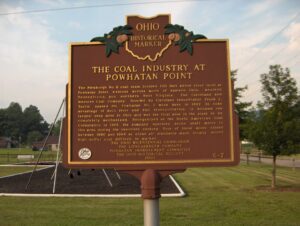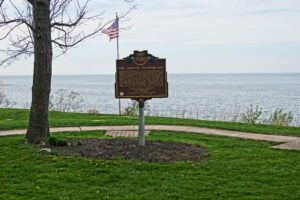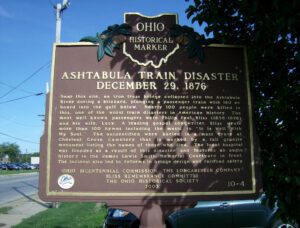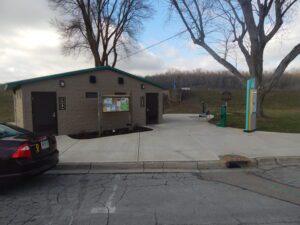, OH
The Pittsburgh No. 8 coal seam, located 100 feet below river level at Powhatan Point, extends across much of eastern Ohio, western Pennsylvania, and northern West Virginia. The Cleveland and Western Coal Company, founded by Cleveland industrialist Frank E. Taplin, opened the Powhatan No. 1 mine here in 1922 to take advantage of both river and rail transportation. It became the largest deep mine in Ohio and was the first mine in the state to be completely mechanized. Reorganized as the North American Coal Corporation in 1925, the company operated seven shaft mines in this area during the twentieth century. Four of these mines closed between 1980 and 1984 as clean air standards made locally mined high-sulfur coal difficult to market.
, OH
Following the completion of the Erie Canal from Albany to Buffalo, New York, Lake Erie became an important link in an all-water route for immigrants traveling from the eastern seaboard into the Midwest. The 600-ton lake steamer G.P. Griffith, launched in 1847, was one of dozens built to capitalize on this booming trade. On June 17, 1850, the Griffith, outbound with more than 300 passengers on a three-day voyage from Buffalo to Toledo, caught fire and burned about 220 yards from this overlook. Many of the German, English, Irish, and Scandinavian settlers were laden with money sewn into their clothing, and few reached shore. Contemporary accounts listed 286 lost. Most were buried in a mass grave on the beach, since reclaimed by Lake Erie. The Griffith incident remains one of the worst maritime disasters on the Great Lakes.
, OH
Near this site, an iron truss bridge collapsed into the Ashtabula River during a blizzard, plunging a passenger train with 160 on board into the gulf below. Nearly 100 people were killed in this, one of the worst train disasters in American history. The most well known passengers were Philip Paul Bliss (1838-1876) and his wife, Lucy. A leading gospel songwriter, Bliss wrote more than 100 hymns including the music to “It Is Well With My Soul.” The unidentified were buried in a mass grave at Chestnut Grove Cemetery that is marked by a tall granite monument listing the names of those who died. The local hospital was founded as a result of this disaster and features an audio history in the James Lewis Smith Memorial Courtyard in front. The incident also led to reforms in bridge design and railroad safety.
, OH
In late March 1913, a series of three severe rainstorms inundated the already saturated and frozen ground of the Miami Valley, causing one of Ohio’s greatest natural disasters, the Flood of 1913. On March 25, the Great Miami River overflowed its banks at Miamisburg, fed by runoff from Bear and Sycamore creeks. Homes, businesses, and the bridges at Linden Avenue and Sycamore Street were swept away or wrecked by floodwaters reaching as high as eleven feet on Main and First streets. Early reports indicated that six people in the area died. Cleanup and recovery efforts took approximately a year. (Continued on other side)





